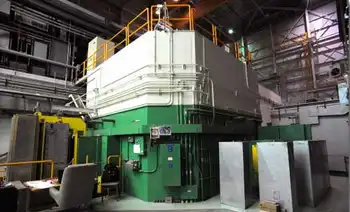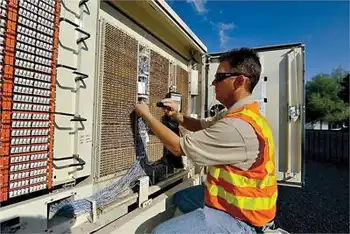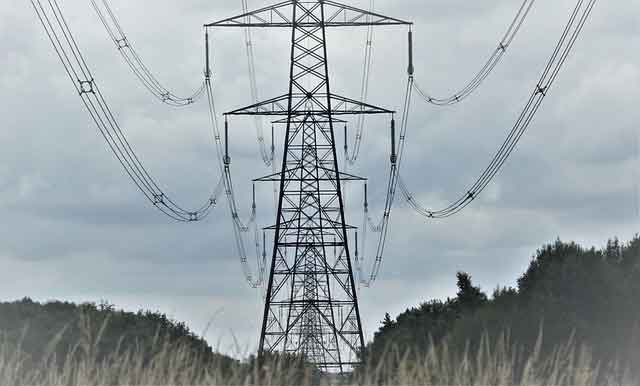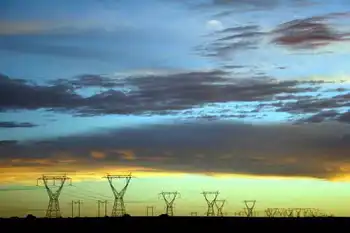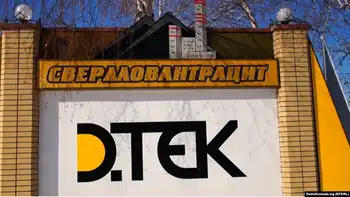Nuclear power may be in early stages of a revival
By New York Times
Arc Flash Training CSA Z462 - Electrical Safety Essentials
Our customized live online or in‑person group training can be delivered to your staff at your location.

- Live Online
- 6 hours Instructor-led
- Group Training Available
When the industry first said several years ago that it would resume building plants, deep skepticism greeted the claim. Not since 1973 had anybody in the United States ordered a nuclear plant that was actually built, and the obstacles to a new generation of plants seemed daunting.
But now, according to the Nuclear Regulatory Commission, 21 companies say they will seek permission to build 34 power plants, from New York to Texas. Factories are springing up in Indiana and Louisiana to build reactor parts. Workers are clearing a site in Georgia to put in reactors. Starting in January, millions of electric customers in Florida will be billed several dollars a month to finance four new reactors.
The French company Areva, the worldÂ’s largest builder of nuclear reactors, and Northrop Grumman announced an investment of more than $360 million at a shipyard in Newport News, Va., to build components for seven proposed American reactors, and more for export.
The change of fortune has come so fast that the Nuclear Regulatory Commission, which had almost forgotten how to accept an application, has gone into a frenzy of hiring, bringing on hundreds of new engineers to handle the crush of applications.
Many problems could derail the so-called nuclear revival, and virtually no one believes all 34 proposed plants will be built. It is still unclear how many billions they would cost, whether the expense can be financed in a troubled credit market, and how the cost might compare with other power sources.
But experts who follow the industry expect that at least some of the 34 will be built.
Given rising public concern about global warming and a recent history of reliable operation among nuclear plants, “the climate for introducing new plants is probably the best it’s been since the industry started canceling plants” 30 years ago, said Brian Balogh, a history professor at the University of Virginia. Unlike most types of power generation, nuclear plants do not emit the gases that cause global warming, once they are completed.
In the United States, orders for new reactors essentially ended in October 1973. That was also the month that the Arab oil embargo began, inaugurating an era of economic problems that drove up construction costs and suppressed demand for power. In the end, more than 100 nuclear reactors, some in advanced stages of construction, were canceled, and tens of billions of dollars were squandered.
On top of that, the Three Mile Island accident in 1979 and the Chernobyl explosion in 1986 made nuclear power a hard sell. And cheap turbines were developed to burn natural gas to generate electricity. By the 1990s, even some nuclear plants that had been running for a few years were deemed too costly and were closed.
But nuclear power never went away. The United States has 104 commercial reactors in operation, and the industry has improved their reliability markedly, increasing their output. They generate almost 20 percent of the countryÂ’s electric power.
As concerns over global warming and natural gas supplies have worsened, strong support has developed in Congress and some states for new reactors. The governor of Maryland recently cited a “moral imperative” to build plants to counter the threat of climate change. Support for new reactors has long been strong in some localities, particularly those that are candidates for billions of dollars in construction work.
And investment dollars are starting to flow.
“We have a long-term vision,” Anne Lauvergeon, chief executive of Areva, explaining her company’s decision to join forces with Northrop Grumman at Newport News.
To help spur a revival, Congress provided $18.5 billion in loan guarantees in a 2005 energy law, plus operating subsidies similar to those available for solar and wind power, and insurance against regulatory delays.
Little effective political opposition to new reactors has emerged so far. The environmental movement is spending its energy fighting new coal-burning power plants, with considerable effect. While few environmental advocates are enthusiastic about nuclear power, a handful acknowledge it could play a role in countering global warming.
“There is no question that some of the passion of the antinuclear movement has drained away,” said Professor Balogh, who is the author of a 1990 book on opposition to nuclear power.
Worried about its ability to build coal plants, but needing new power plants to meet rising electric demand, the utility industry is determined to move ahead on nuclear power. While most spending so far is on engineering work and environmental studies, physical work is in the early stages, as well.
The Georgia Power Company wants new units adjacent to its two Vogtle reactors, finished in the 1980s, and workers there are tearing down old buildings left over from that construction to make space for new construction.
At the Port of Lake Charles, La., the Shaw Group and Westinghouse Electric, owned by Toshiba, are building a factory bigger than 10 football fields that will make components for new reactors in the United States and around the world. BWX Technologies, a subsidiary of McDermott International, is setting up a plant in Mount Vernon, Ind., to resume manufacturing reactor vessels and other big components. Both companies expect work for years to come.
The industryÂ’s most intractable problem, what to do with spent nuclear fuel, has not been solved.
The government was supposed to begin accepting spent fuel for burial in 1998 but now says it will be 2017 at the earliest, and it is not clear that the site under study, Yucca Mountain in Nevada, will win a license.
But companies that want to build say the industry could make do for the next few decades with an above-ground “interim storage” site. That might mean centralized storage in a remote desert facility.
Some skeptics argue that a technology that needs taxpayer help on a large scale should not be built. In fact, construction costs for power plants of all kinds have risen sharply in the last two years, creating special problems for nuclear power, which has more steel and concrete than other plants of equal output. By some estimates costs have more than doubled since 2000.
The critics argue that the same money spent elsewhere — on wind power, or on retrofitting buildings — could create bigger cuts in carbon dioxide output. Joseph J. Romm, an official in the Energy Department during the Clinton administration, pointed to a recent estimate by Florida Power & Light that a new reactor could cost a steep $8,000 for each kilowatt of capacity — enough power to run a window air-conditioner. That is at least double what a coal-burning power plant would cost, and Mr. Romm said that it was only the preconstruction estimate of an industry famous for cost overruns.
He said the plants would be hard to finance. “I just read that McDonald’s was having trouble getting money, and there’s not a lot of risk in building a new McDonald’s,” he said. “Obviously, the risks with a nuclear plant are enormous.”
He predicted a return to the problem of the 1970s — high prices for electricity driving electric demand down so much that plants under construction were no longer needed. Some people say they believe more political opposition will emerge once some of the proposed plants move closer to construction.
At the Union of Concerned Scientists, an advocacy group in Washington that frequently criticizes the nuclear industry, David A. Lochbaum, a nuclear engineer, said it was too soon to say that opposition was weaker now than during construction of the older plants, when grandmothers tried to block bulldozers.
“We’ve got the grandmothers; we just don’t have the bulldozers,” he said. “There’s not the Kodak moment that a lot of these protests need.”





